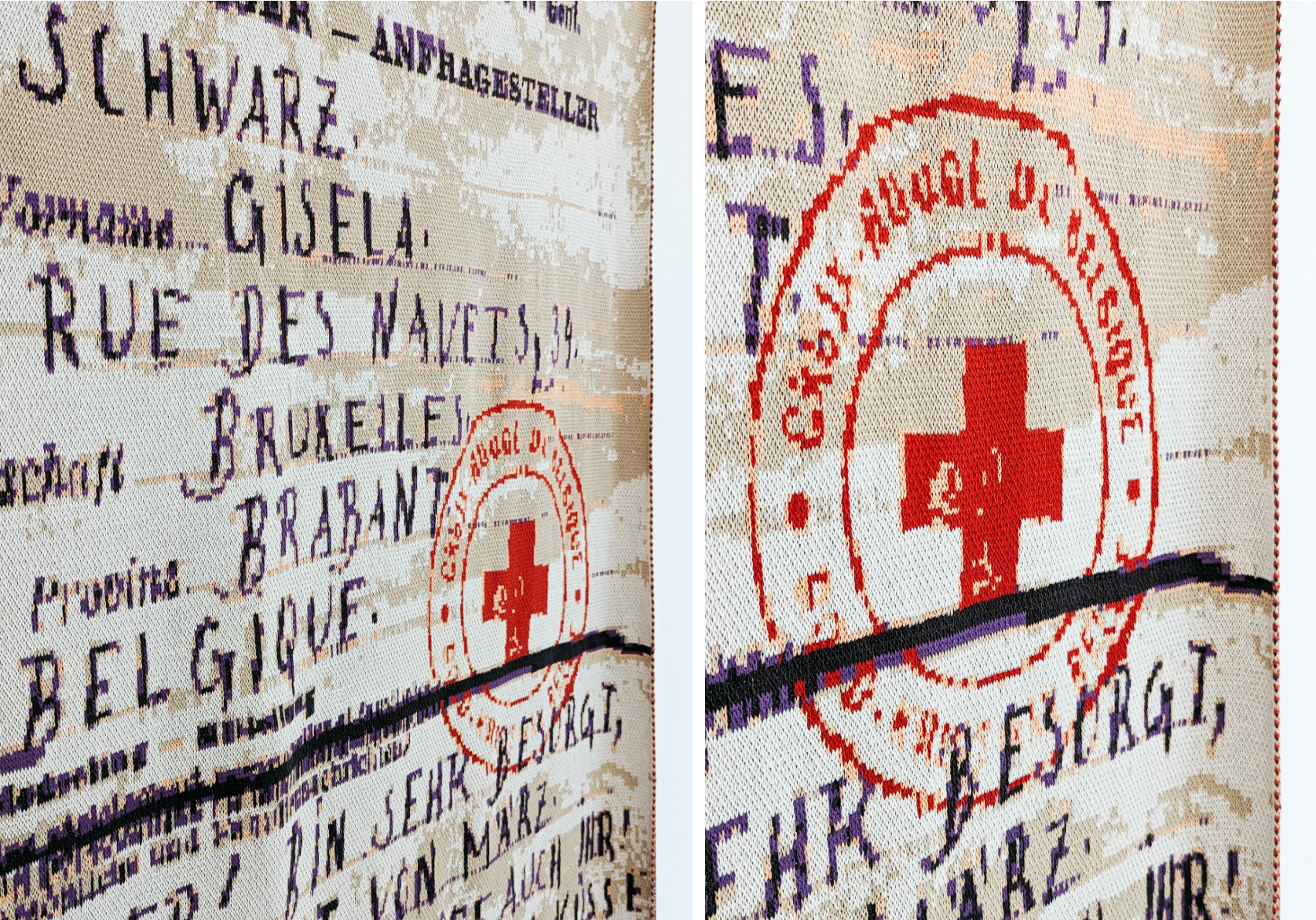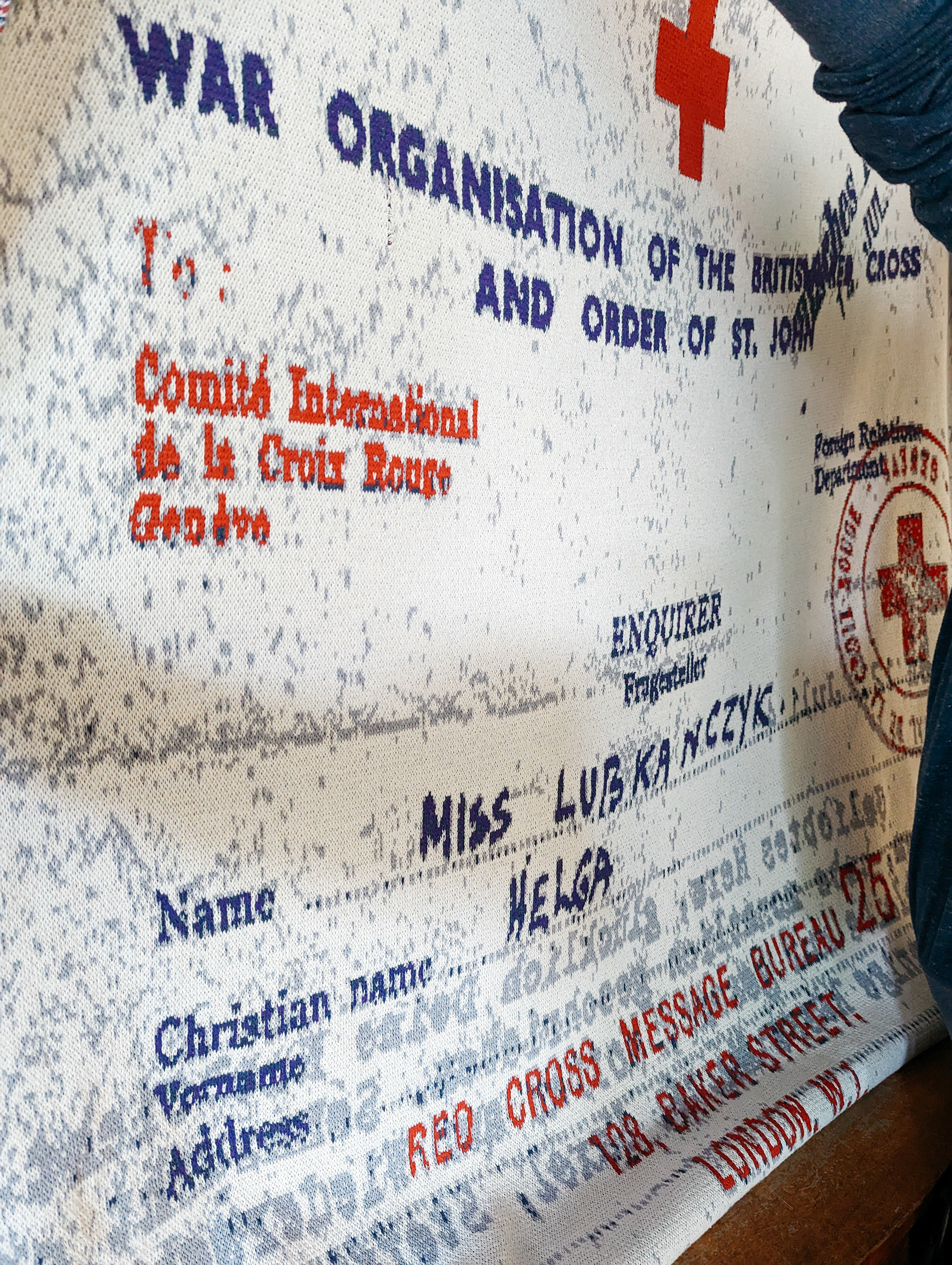RED CROSS BLANKETS (2023)
Knitted as part of the Memorial Gestures artist's residency at Holocaust Centre North in England, from locally-sourced 100% combed cotton yarn
Knitted as part of the Memorial Gestures artist's residency at Holocaust Centre North in England, from locally-sourced 100% combed cotton yarn
EN / FR
Red Cross Blankets is a series of knitted pieces produced from telegrams and letters in the archive at Holocaust Centre North in Huddersfield, England, exploring the profound tapestry of loss inherent in the wake of the Holocaust. Each message relays sentiments of hope in the face of Nazi censorship, demonstrating love’s profound ability to transcend political and physical walls. These writings are translated into tactile objects which visitors are encouraged to touch and hold, experiencing an intimate understanding of the weight of lives lost—were these their last words?
Red Cross Blankets is a series of knitted pieces produced from telegrams and letters in the archive at Holocaust Centre North in Huddersfield, England, exploring the profound tapestry of loss inherent in the wake of the Holocaust. Each message relays sentiments of hope in the face of Nazi censorship, demonstrating love’s profound ability to transcend political and physical walls. These writings are translated into tactile objects which visitors are encouraged to touch and hold, experiencing an intimate understanding of the weight of lives lost—were these their last words?













